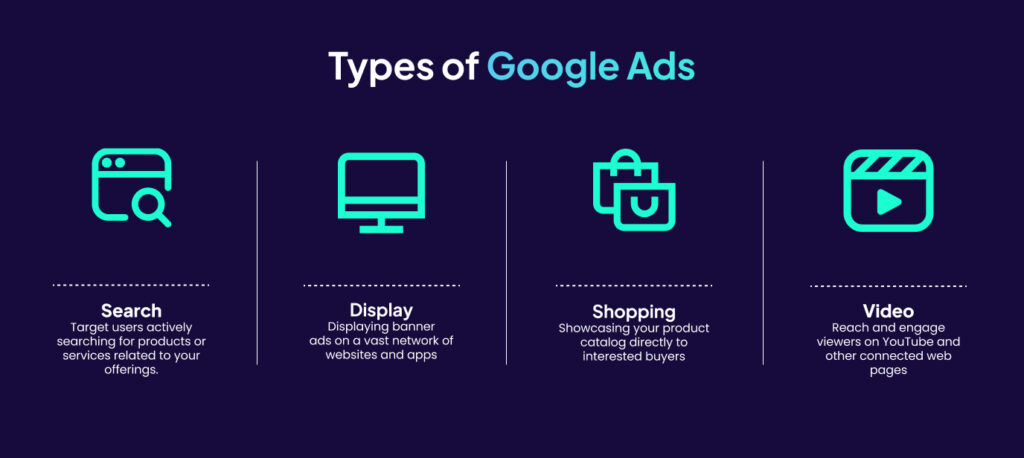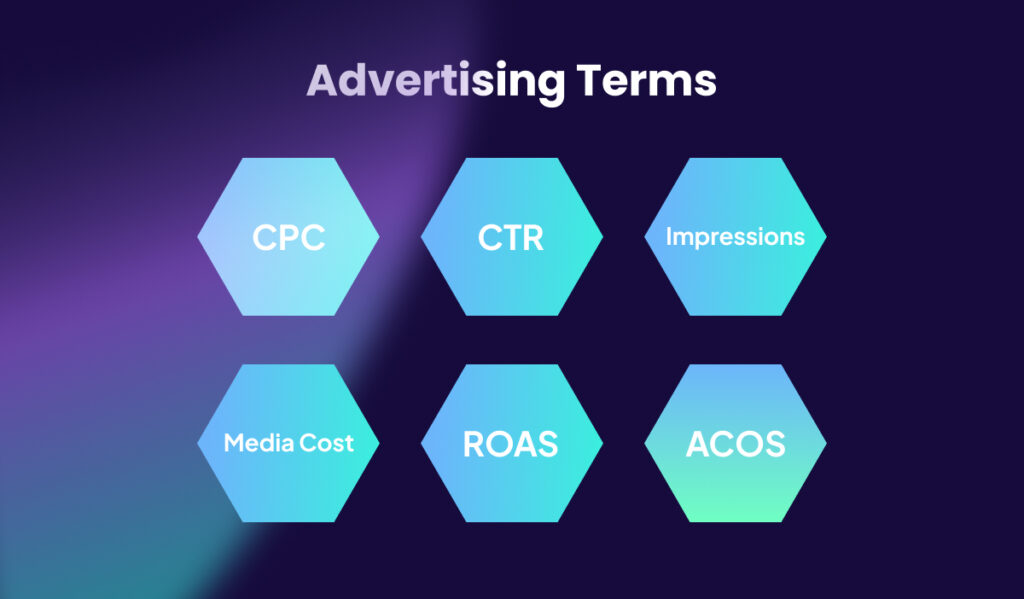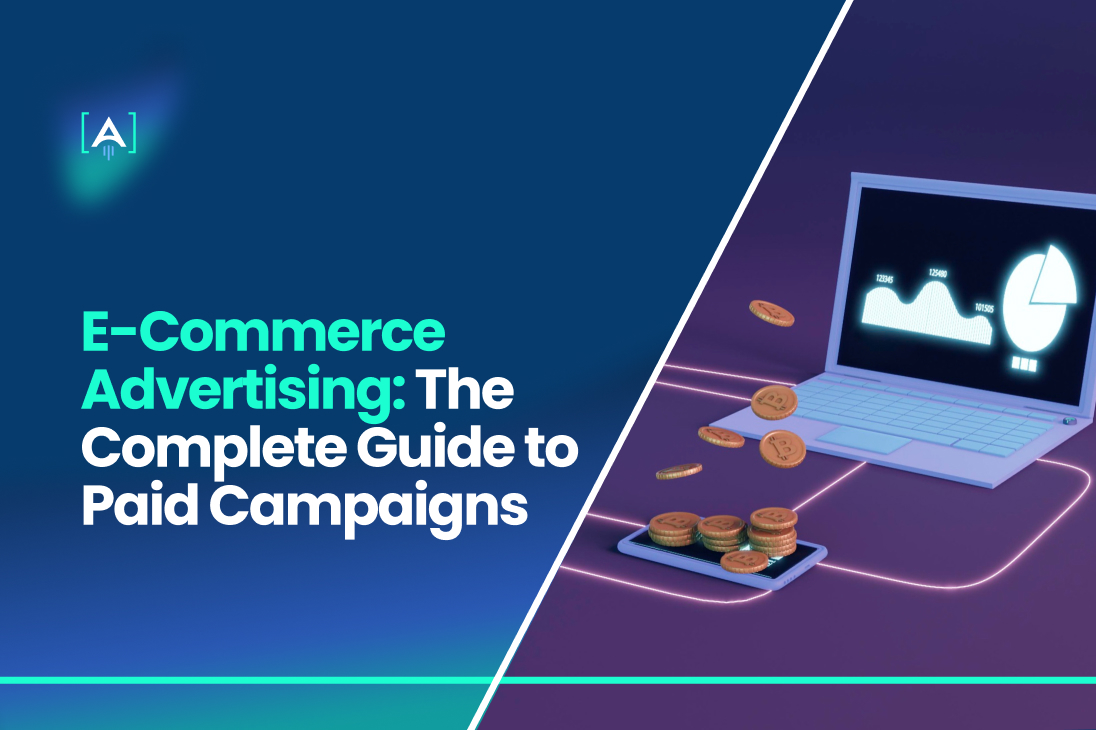E-commerce advertising is everywhere, even if it aims not to advertise it!
People feel engaged with any product or service in case the introduction of it catches their attention.
E-commerce marketing targets engagement.
According to Statista, the combined global revenues from advertising and marketing are projected to surpass $1.75 trillion in 2024.
Source: Statista
The guide will cover every detail you need to know about E-Commerce advertising, its key segments, and the importance of Paid Campaigns.
The Rise of Paid Advertising in E-Commerce
Paid advertising for e-commerce has become an essential strategy for businesses searching to boost their online presence and drive sales.
This method gained significant popularity in the early 2010s, coinciding with the rapid growth of social media platforms and search engines offering targeted advertising solutions for your e-commerce store.
Initially adopted by large enterprises and tech-savvy startups, e-commerce advertising for paid services soon proved effective across various industries, shared in online directories, including e-commerce businesses.
As mobile devices became ubiquitous, so called mobile commerce, these ads became even more critical, allowing businesses to reach consumers anytime, anywhere.
E-commerce businesses utilize paid advertising through platforms like Google Ads, Facebook, and Instagram to target specific demographics and drive website traffic. Of course, we should consider that business models are different.
The precision targeting, extensive reach, and measurable results of paid advertising have made it an indispensable tool for e-commerce businesses aiming to thrive in a competitive online marketplace.
As digital landscapes continue to evolve, the role of paid advertising in driving online purchases and achieving business growth remains paramount.
The Types of E-Commerce Advertising
E-commerce advertising encompasses various strategies and platforms, each essential for reaching different audiences and achieving business goals.
The primary segments include search engine advertising, social media advertising, display advertising, and affiliate marketing.
Search Engine Advertising
This includes Pay-Per-Click (PPC) and Search Engine Marketing (SEM).
PPC allows e-commerce businesses to bid on keywords and show their ads at the top of search engine results. This method is highly effective for capturing intent-driven traffic, as it targets users actively searching for related products.
According to the Google study, businesses make an average of $2 in credit for each $1 spent on Google Ads.
This segment is vital for Business-to-Business (B2B) and Business-to-Consumer (B2C) models, driving significant online purchases.
Social Media Advertising
Platforms like Facebook, Instagram, and LinkedIn provide robust advertising solutions tailored for e-commerce. These platforms offer targeted advertising based on user demographics, interests, and behavior.
For instance, Facebook Ads can be precisely targeted to reach users engaged in similar products or services, increasing the likelihood of conversions.
Social media advertising is essential for building brand awareness and engaging with potential customers, making it indispensable for online stores looking to expand their reach.
Display Advertising
This includes banner, video, and rich media ads on various websites. Display advertising helps in retargeting visitors who have previously visited an e-commerce site but did not complete a purchase.
Source: Influencer Marketing Hub
According to eMarketer, in 2024, digital audio advertising in the US is expected to account for $1.83 billion, constituting 24.6% of the market.
Display ads are particularly effective for creating visual appeal and reinforcing brand messages across the web.
Affiliate Marketing
This performance-based advertising involves partnering with affiliates who promote the e-commerce business’s products on their platforms. Affiliates earn a commission for each sale conducted through their links.
This type of advertising is beneficial for reaching new audiences through trusted sources, enhancing credibility, and driving online purchases.
According to Statista, Affiliate marketing in the US was projected to reach 8.2 billion U.S. dollars by 2022, a rise from 5.4 billion recorded in 2017.
Source: Influencer Marketing Hub
Print Ads
Print ads can be a valuable tool for e-commerce businesses to reach a targeted audience. While the rise of e-commerce has shifted some marketing focus online, print ads still hold a place in reaching specific demographics.
For instance, if your e-commerce store caters to a niche audience, such as gardeners or hobbyists, placing a print ad in a relevant magazine can effectively connect with potential customers.
Additionally, print ads can be used to promote special offers or new product launches, driving traffic to your online store.
Here’s a tip: When designing your print ad, make sure to include a clear call to action, like a discount code or a web address, to nudge readers toward your online store.
The Language of Advertising
Understanding the language of advertising is crucial for any brand.
Essential terms like target audience, the specific group you want your message to reach, and call to action (CTA), as well as clear instructions for what you want consumers to do next (visit the website, use a coupon code), are fundamental. But there’s more!
- Impressions refer to the number of times your ad is shown, not considering who clicks on it. It’s a basic measure of how many people are seeing your message.
- Clicks (not included in your list, but important): This is the number of times someone actually clicks on your ad. It’s a good indicator of initial ad interest.
- Click-Through Rate (CTR): This metric takes clicks one step further. It’s calculated by dividing the number of clicks by the number of impressions, expressed as a percentage. A high CTR indicates that your ad grabs attention and gets people to click.
- Cost-Per-Click (CPC): This tells you how much you pay each time someone clicks on your ad. Understanding the cost-effectiveness of your campaign is crucial.
- Media Cost refers to the total amount spent on advertising placements. Understanding media cost alongside metrics like clicks and conversions helps you assess where your budget is going.
- Return On Ad Spend (ROAS): This is a profitability metric for e-commerce advertising. It tells you how much revenue you collect for every dollar spent on ads. A high ROAS indicates your ads are driving sales effectively.
- ACOS (Advertising Cost of Sale): This term is primarily used on Amazon Advertising and is similar to ROAS, but instead of revenue, it focuses on profit. It tells you how much it costs to acquire a sale through advertising on Amazon.
Google Ads for Your E-commerce Success
Google Ads presents a powerful toolkit for eCommerce businesses to thrive in the digital landscape. By leveraging various campaign types, you can target potential customers at every stage of their purchasing journey, driving traffic, brand awareness, and sales to your online store.

- Shopping Campaigns: This is a go-to option for showcasing your product catalog directly to interested buyers. You create a product feed in Google Merchant Center containing details and images of your offerings. Google then utilizes this feed to generate visually appealing Shopping Ads displayed on search results pages and across partner websites.
- Search Network Campaigns: Target users actively searching for products or services related to your offerings. Here, you craft text-based ads that appear on Google Search Engine Results Pages (SERPs) according to the relevant keywords you choose. This allows you to capture high-intent traffic, where users are closer to finalizing the purchase decision.
- Display Network Campaigns: Expand your reach beyond search by displaying banner ads on a vast network of websites and apps partnered with Google. This is a fantastic approach for brand awareness, retargeting website visitors who haven’t converted yet, and showcasing product promotions.
- Remarketing Campaigns: Reconnect with website visitors who have interacted with your brand but haven’t completed a purchase. This powerful strategy utilizes cookies to display targeted ads across the web, reminding them of your products and enticing them to return and complete their transactions.
The Difference of Paid Ads and Organic Traffic
In the world of electronic commerce, or e-commerce, businesses often rely on two key strategies to drive traffic to their online stores: paid ads and organic traffic.
Paid ads involve paying for placement in search engine results, on social media platforms, or other websites. On the other hand, organic traffic is about the visitors who visit a website through unpaid, natural search engine results.
Both strategies have advantages and disadvantages that can significantly impact an e-commerce business’s success. While paid ads can provide immediate visibility and targeted exposure for an e-commerce store, they require a budget for ongoing ad spending and may not be sustainable in the long term.
Conversely, organic traffic, driven by search engine optimization (SEO) and content marketing efforts, can yield sustainable and cost-effective results, but it often requires time and consistent effort to build momentum.
Moreover, the nature of an e-commerce business model can influence the choice between the two strategies. For instance, a new e-commerce store looking for quick exposure and sales might benefit from investing in paid ads to jumpstart its visibility and revenue.
Key Components of Successful E-commerce Advertising
In today’s hyper-competitive digital world, crafting a winning advertising strategy is essential for any e-commerce business. You can transform curious web browsers into loyal customers with the right approach. Here’s a roadmap to navigate the key components of successful e-commerce advertising:
1. Know Your Audience
Before discussing campaign specifics, you should first understand your ideal customer. Then, develop buyer personas that detail their demographics, online behavior, and pain points. This will empower you to tailor your messaging and target the right people with the right ads.

2. Embrace Compelling Product Presentation
High-quality visuals are paramount in e-commerce advertising. Professional product photos that showcase features and benefits are essential. Consider incorporating lifestyle imagery to demonstrate how your products fit your target audience’s lives.
3. Craft Clear and Compelling Ad Copy
Write concise yet persuasive ad copy that entices clicks and conversions.
Highlight unique selling propositions (USPs) and craft messaging that reverberates with your target audience’s needs and desires.
4. Select the Right Advertising Platforms
The digital advertising landscape offers a multitude of platforms. With its Search, Display, and Shopping options, Google Ads is a powerhouse for reaching potential customers across various stages of the buying journey.
Social media platforms, such as Facebook and Instagram, enable targeted e-commerce advertising based on demographics and interests. Explore which platforms your target audience frequents to maximize your reach.
5. The Power of Retargeting
Many website visitors browse but don’t convert right away. Retargeting allows you to recapture their attention with strategic ad placements across the web.
This gentle reminder can nudge them to your store and complete their purchase.
6. Leverage the Allure of Promotions and Offers
Strategic discounts and promotions can incentivize purchases and boost sales. Highlight limited-time offers or special bundles in your ad copy to create a sense of urgency and encourage clicks.
7. Negative Keyword Lists
Creating negative keyword lists is an important aspect of optimizing paid e-commerce advertising campaigns for e-commerce businesses.
Negative keywords are words or phrases that advertisers exclude from their targeting to ensure that their ads are not shown to users who are unlikely to convert or irrelevant to their products.
By analyzing search terms and identifying irrelevant or unprofitable keywords, e-commerce businesses can create negative keyword lists that help refine their targeting and improve their campaigns’ efficiency.
This can reduce unnecessary ad spend, increase the quality of ad placements, and ultimately drive more relevant traffic and conversions.
8. Embrace the Power of Data and Analytics
Don’t set your ads and forget them!
Regularly monitor campaign performance through analytics platforms.
Analyze metrics like click-through rates (CTR), conversion rates, and cost-per-acquisition (CPA) to identify what’s working and needs tweaking.
Continuously optimize your campaigns for better results.
9. Test and Refine
The world of e-commerce advertising is dynamic.
Don’t be afraid to experiment with different ad formats, targeting strategies, and messaging.
A/B testing enables you to compare different variations and identify the winning combinations that resonate most with your audience.
Partner with [A] Growth Agency for Your E-Commerce Industry
Do you consider partnering with an agency to elevate your e-commerce advertising efforts?
[A] Growth Agency is the correct choice.
Our dedicated team of experts will implement the best practices and introduce you to new marketing tools and technologies by keeping them updated on the latest trends and algorithms.
Let’s collaborate to drive results, elevate your brand, and amplify your impact in the market.
Contact us today to explore the possibilities and chart a path towards your business success.”

